Maria Gulemetova’s Beyond the Fence
 February 12th, 2019 by jules
February 12th, 2019 by jules
‘Do you mean these?’ said Piggy. ‘They’re called clothes.'”
(Click image to enlarge and see text in its entirety)
I’m taking a moment today to share some spreads from Maria Gulemetova’s Beyond the Fence (Child’s Play), originally released in the UK in 2017 and published here in the U.S. last year. Last week, the nominations for the 2019 CILIP Kate Greenaway Children’s Book Awards were announced, and Gulemetova’s book was included. This tame-to-wild, domestication-to-freedom narrative is oft-explored in children’s literature, this particular story about a domesticated pig who meets a wild one and eventually frees himself of his clothes and runs out into the wide, wild world. We saw something similar, for instance, in Peter Brown’s Mr. Tiger Goes Wild. However, this book takes that story to new places, and I love the notion of sharing this with young readers and letting it sit in their minds and hearts.
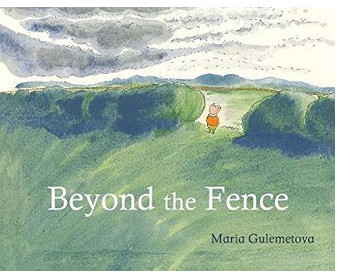 Piggy lives with a boy named Thomas, who talks. A lot. Thomas dominates the conversation, in fact, and doesn’t leave Piggy any room to express himself or his opinions. What Thomas wants to play, Piggy plays. What Thomas wants to do, Piggy does. What Piggy wears? Well, Thomas drives that too. “Thomas knew what suited Piggy,” Gulemetova plainly states.
Piggy lives with a boy named Thomas, who talks. A lot. Thomas dominates the conversation, in fact, and doesn’t leave Piggy any room to express himself or his opinions. What Thomas wants to play, Piggy plays. What Thomas wants to do, Piggy does. What Piggy wears? Well, Thomas drives that too. “Thomas knew what suited Piggy,” Gulemetova plainly states.
When Piggy meets Wild Pig on a walk one day, he’s intrigued. “Running’s fun,” Wild Pig tells him. “You should try it.” Piggy turns him down: “I’d love to, but I have to go home now.” And Piggy does return home, staring longingly out the window, but Thomas is otherwise preoccupied during this time with a visit from his cousin, so Piggy keeps venturing out to find the Wild Pig. Eventually, Piggy makes the decision to leave Thomas and the only home he knows. He merely excuses himself (during what is probably his thousandth tea party, Piggy dressed as a jester in this one), heads outside, throws off his clothes, finds Wild Pig, and ventures “beyond the fence.” (Note that I’m referring to Piggy as a “he,” though the gender for Piggy is never specified in the story.)
Children are often at the whim of the adults in their lives, who make decisions for them and don’t always inquire about what they want. I like that Gulemetova’s story works on this level, and a Twitter post from the ever-insightful children’s book author, educator, and lecturer Megan Dowd Lambert directed me to this tweet:
"A youth who identifies as gender fluid shared thoughts and feelings about what it’s like to have others dictate your identity rather than accepting who you are" youth therapist Bonnie Thomas shares examples of using #BeyondtheFence to explore issues #ChildrensMentalHealthWeek pic.twitter.com/Raylg7PjuO
— Child's Play (Int) (@ChildsPlayBooks) February 8, 2019
Yes. That, too.
Gulemetova was born in Bulgaria. Her father was an illustrator, and her mother, an art historian. She evidently makes her home in the U.S. now. I love this book’s pacing; it’s never rushed. And Gulemetova’s artwork also allows for the story to breathe. Here are some more spreads so that the illustrations can speak for themselves.
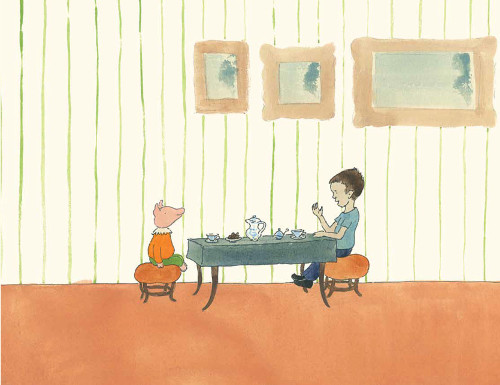
(Click to enlarge)
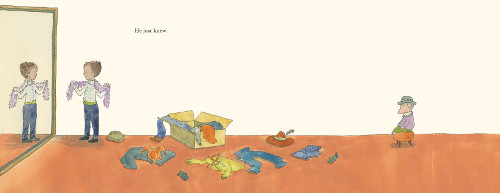
(Click to enlarge)
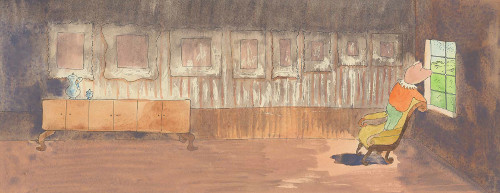
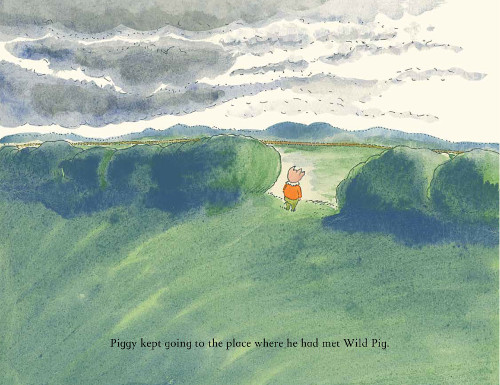
(Click to enlarge)
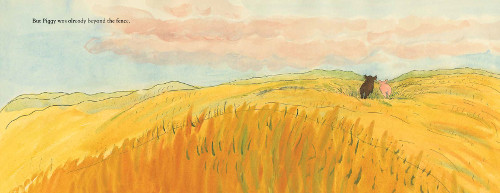
(Click to enlarge)
BEYOND THE FENCE. Text and illustrations copyright © 2017 Maria Gulemetova. First published in 2017 by Child’s Play (International) Ltd, UK. Published in USA in 2018 by Child’s Play Inc., Auburn, Maine. Illustrations reproduced by permission of the publisher.

